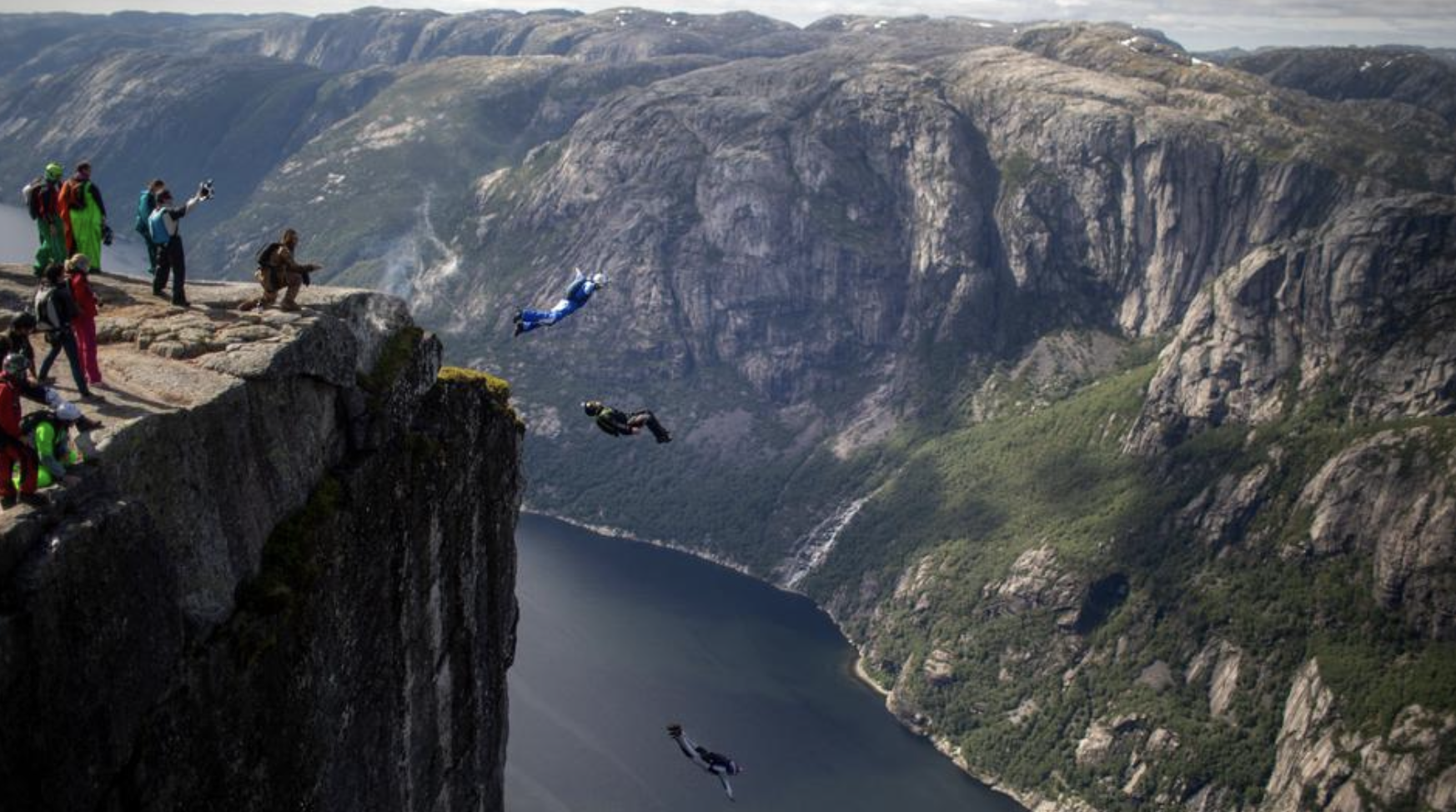The National Geographic documentary “Fly” opens with vintage footage of Franz Reichelt, infamous 1912 attempt to jump off the Eiffel Tower wearing wings resulting in his death. It’s a disturbing image, but also, somewhat grimly, a funny one in the foolishness of the endeavor. Who in their right mind would do such a thing?
That’s a dichotomy that hangs over the rest of the film about BASE jumping from directors Christina Clusiau and Shaul Schwarz. The movie attempts to highlight the beauty of the sport while also grappling with how absurdly dangerous it is. It succeeds at highlighting the extreme personalities of those drawn to such an endeavor, but fails to make those of us that would prefer to remain with our feet on the ground understand why it’s worth it.
“Fly,” which is scheduled for a brief IMAX run after playing SXSW, Hot Docs, and Telluride, is the latest in a mini-genre of documentaries that deal with people engaging in hazardous and (some might say) extremely stupid pastimes. You can make the case that “Free Solo,” the best of the bunch, kicked off this trend with its character study of climber Alex Honnold. Since then we’ve had “The Deepest Breath” about freedivers and “Skywalkers: A Love Story” about Russian daredevil influencers who ascend really tall buildings. All of these docs have variations on the same mission: Answering the question of “why?”
“Fly” makes its case by highlighting a series of luminaries in the BASE jumping world. Scotty Bob is a former Marine, who we meet as essentially a nomad, finding peaks to leap off of in his wingsuit, the rush filling a void in his life. Then there are two couples: Norway-based Espen Fadnes, whose mountain climber father introduced him to the idea scaling great heights, and his girlfriend Amber Forte, who eventually competes alongside Espen in tandem flying competitions; and Jimmy Pouchert and Marta Empinotti, BASE jumping instructors out of Utah who also run Burning Man-esque parties for their fellow enthusiasts.
The specter of death hovers over the film from the outset. Early on, Scotty is asked what he’d like the audience to know if he’s not around by the time the documentary is released. He responds by insisting that he’ll still be around. From then it’s not a question of if one of these subjects will die but when and which one.
“Fly” does a solid job of showing the majesty of soaring through the air in a wingsuit or leaping off a high bridge with a parachute attached. Footage taken from the cameras that the athletes wear on their heads show the first person perspective that looks like it could be from, say, a Tom Cruise flick. (Though, frankly, watching Cruise do a BASE stunt in “Mission: Impossible” is still more fun.) Drone shots capture just how close these people are to getting caught on trees or slammed into the side of a mountain.
Where “Fly” fails is in explaining how this all works. It’s a remarkably untechnical film, and you come away with it with more questions than answers about the mechanics of jumping. There is little footage of the training that goes into this process, or what kind of other preparation is required. The lack of information on just how exactly these people manage these feats or what separates hard from easy jumps gives the entire endeavor a weightlessness. (Pun intended.) With a little more detail “Fly” could have made the case for BASE jumping as a sport and an art form.
The intention is more of a psychological study of what drives this passion than “30 for 30” special, but by skipping over the skill it takes to throw yourself off of high points and survive “Fly” never gives its viewers the tools to truly plunge into the brains of these risk takers.
Despite the sense that something is going to go horribly wrong at some point — and it does multiple times over — “Fly” lacks a sense of momentum. Filmed over the course of seven years, it plays out like a series of snapshots rather than a cohesive narrative. Though it’s consumed with the idea of death, it also treats the loss of life almost distressingly casually. Arguably, that’s the way these jumpers see it too. When someone dies there’s a period of mourning, but they all keep jumping in spite of the pain they could potentially cause their loved ones.
“Fly” is divided between thinking all of this is extremely cool and realizing how morbid it all seems, but it ultimately lands on the side of: Yeah, it’s pretty cool. That’s a disorienting feeling for a viewer. By the end it feels like we’re supposed to celebrate all of this as a triumph of the human spirit instead of a demonstration of the kind of irresponsible acts people will do to get a momentary high. Yes, maybe the very notion of BASE jumping lands somewhere in the middle of these two poles, but “Fly” never makes the case for it either way. Instead it just seeks cheap thrills.
Grade: C+
“Fly” screened at the 2024 Telluride Film Festival after previously playing at SXSW and Hot Docs 2024. National Geographic Films will release it in IMAX theaters on September 2 and 3.






